Quick Details
Photographer
$ 99
You cook a wonderful meal and your friends say: “WOW! That was GREAT! Delicious! What kind of OVEN did you use? You must have a great OVEN!”
You would be miffed, right? Because you know it’s not the oven, it’s the COOK who prepares a great meal. Great soufflés were prepared by Julia Child, not by her pots and pans. And the same is true in photography: it’s not the camera, it’s the photographer who makes the image. We firmly believe you can take a good or bad picture with ANY camera!
Photography, like painting, is all about composition: the symmetry, the balance, the leading lines, the framing, the perspective, the points of interest in the image that draw the viewer’s eye. So this safari is all about training you to see and capture good composition in your photographs.
And we are offering it inside one of the most excitingly beautiful venues in Washington: the East Building of the National Gallery of Art, reopened after three years of spectacular renovation. The entire building, and each of its galleries, are themselves perfect examples of visual composition. Constructed with private donations within the existing I. M. Pei-designed East Building on the National Mall, more than 12,250 square feet of new spaces for art l enable the Gallery to present more art and accommodate an increasing number of visitors.
The new spaces include the Roof Terrace—an outdoor sculpture terrace overlooking Pennsylvania Avenue—as well as two flanking, sky-lit, interior tower galleries. The Roof Terrace features several outdoor sculptures, including the monumental, electric blue Hahn/Cock (2013) by Katharina Fritsch. The northwest Tower Gallery showcases a lively installation of works by Alexander Calder (1898–1976), and the northeast Tower Gallery presents abstract expressionist works, including a changing selection of paintings by Mark Rothko (1903–1970). Trees, plantings, and built-in seating makes the Roof Terrace an inviting place to relax, look out over the city, and see the architecture of the East Building from an entirely new perspective.
We begin the safari in the atrium of the East Building, with a general orientation on photographic technique and principles of composition. Next we examine classically composed black and white photographs from the 1940’s and 1950’s by French photographer Henri Cartier Bresson, who was famous for snapping the shutter at just the “decisive moment”. We then go inside one of the galleries to photograph and critique the compositional elements of French paintings of the 17th, 18th and 19th centuries.Next, we turn to the architecture of the East Building itself: its soaring, angular lines, its clean angles, and the placement of the Calder mobiles in the massive atrium, specifically designed by Calder for the gallery’s opening in 1978.
We then roam all the floors of the gallery, photographing works of modern and traditional art that demonstrate principles of good composition, including the new “Photography Reinvented” exhibit on the upper level, and the “Los Angeles to New York “ exhibit of abstract art on the lower level.
Our safari also takes us up into the newly constructed towers on the 4th floor, which include works by Mark Rothko, to a room of artfully placed Calder mobiles, and to the HUGE blue rooster crowing over the new rooftop terrace that links the new towers and which offers spectacular views of the city and the Capitol building We end our safari traversing the spectacular $3 million LED light display in the underground tunnel that links the East Building with the West Building, playing with shutter speeds to get interesting images in our cameras.
In short, this is a safari to help you become a more astute critic of your own photos by studying and documenting works of the masters. We also teach you how to shoot artwork in low-light situations without flash or tripod, getting the right exposure and white balance. Any camera or smartphone will do, but for best results we recommend SLR’s or ILC’s with high ISO capability (1600, 3200, 6400) and “fast lenses like a 50mm F1.4 or a 35 mm F1.8 that are especially good in low-light shooting of artwork. No tripods or backpacks allowed inside the gallery.
-
- Any camera or smartphone will do
(For best results we recommend SLR’s or ILC’s with high ISO capability (1600, 3200, 6400) and “”fast lenses like a 50mm F1.4 or a 35 mm F1.8 that are especially good in low-light shooting of artwork. - Extra camera battery
- Extra memory card
- No tripods or backpacks allowed inside the gallery.
- Any camera or smartphone will do
-
Meet behind security inside modernistic front entrance to East Building (NOT the West Building) of National Gallery of Art, 4th St and Constitution Avenue NW.
-
Architectural photographer E. David Luria is founder and director of the Washington Photo Safari, which has provided over 6,700 photo safaris for 46,000 amateur photographers – an average of 5 people every day, 365 days a year, since it was founded in 1999.
“You taught me several important points and helped me better understand not only photography but also my own camera. I’ve taken photo classes at the Smithsonian, Glen Echo, and the Washington School of Photography. You’ve been the best among all the teachers I’ve had.“ David Lassiter, Olney, MD
Trained in Paris by a protégé of Henri Cartier-Bresson, Mr. Luria is a member of the American Society of Media Photographers and the Society of Photographic Educators and has had his images of DC appear in over 100 publications, calendars, and postcards and on 30 magazine covers.
